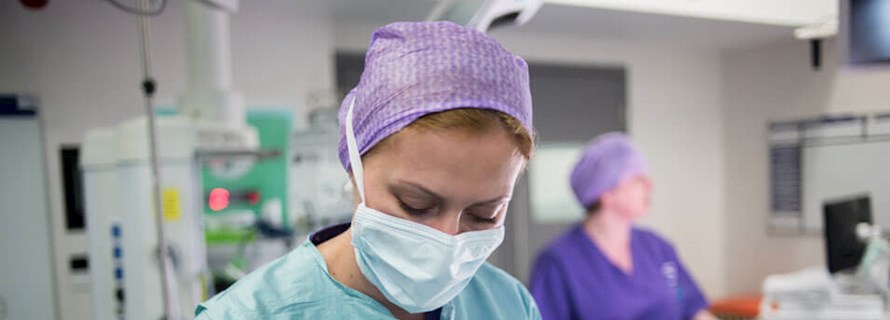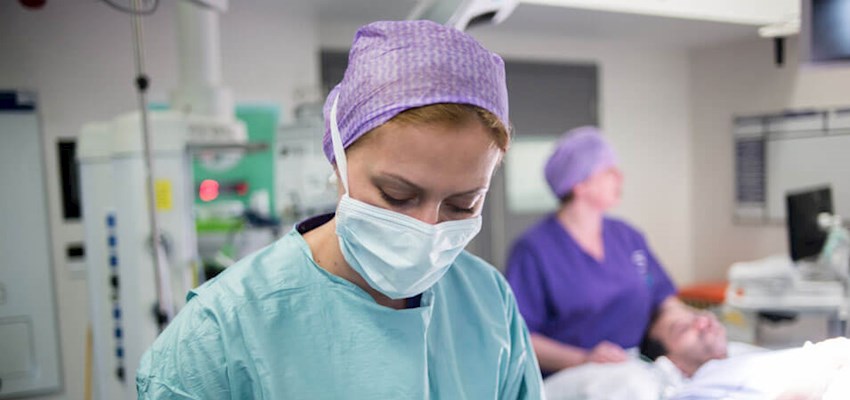Knee realignment (osteotomy) surgery
KNEE OR HIGH TIBIAL OSTEOTOMY (HTO)
Knee osteotomy can be an effective alternative to knee replacement, allowing you to keep your joint for longer
What is high tibial osteotomy?
A high tibial osteotomy, or HTO, is a surgical procedure where the patient’s tibia (shinbone) is cut and reshaped to alleviate pressure within the knee joint.
Why do I need knee osteotomy surgery?
HTO surgery is recommended to alleviate pain and associated symptoms in people who are suffering from the early effects of osteoarthritis in the knee. Osteoarthritis is one of the more common forms of arthritis and typically occurs in the joints as a result of long-term wear and tear.
Benefits of knee realignment treatment
The main benefits of a knee realignment procedure include:
- Relief from pain
- Delaying further wear in the knee joint
- Delaying the need for knee replacement surgery
The procedure transfers weight from the arthritic area of your knee to a healthier part of the joint, allowing patients to return to physical activity without pain and restriction of movement.
As HTO surgery prolongs the life of a knee joint, it can delay the need for a full knee replacement – in some cases, by a number of years.
Although pain management is a little less predictable than with a knee replacement, the procedure is straightforward and can give good relief from the symptoms of osteoarthritis.
Need to know
-
What happens during knee realignment surgery? icon plus
The whole procedure is planned in detail before the surgery itself. Using an X-ray of your leg as a guide, your surgeon will cut the bone either above or below the knee – the length and location of this cut will have been calculated in advance. This calculation also determines the kind of osteotomy you might have.
The two sides of the cut bone are separated to form a wedge-shaped opening. These are then stabilised using plates and screws, and a bone graft may be used to provide extra stability.
The procedure takes around two hours to complete and is carried out under general anaesthetic, so you'll be asleep throughout.
-
Is osteotomy surgery safe? icon plus
While no surgery performed under general anaesthesia is risk-free, HTO surgery is generally considered safe. Our highly specialised teams undertake procedures of this type all the time with problems occurring rarely, if ever.
General complications can include:
- Blood clots
- Stroke
- Heart attack
- Pneumonia
A complication specific to HTO surgery is the possibility of 'non-union'. This is a condition where the bone does not properly heal together after the osteotomy.
You’ll receive information guides detailing any risks before your operation, and your surgeon can discuss potential complications with you in detail as part of your personalised care plan.
-
How painful is a knee osteotomy? icon plus
HTO surgery is carried out under general anaesthetic, so you won’t feel any pain during the procedure itself.
The procedure is fairly invasive however, so you should expect to feel some degree of discomfort as the surgical anaesthesia wears off following the operation. Our team will be on hand to prescribe and manage pain medication from this initial, post-operative period and throughout the duration of your recovery.
-
Is knee osteotomy major surgery? icon plus
Although the risks associated with HTO surgery are relatively low, it is still considered major surgery.
Depending on your individual circumstances, the full procedure can take a few hours, during which time our team will monitor your wellbeing closely to check for any complications and ensure you recover well.
-
How to prepare for knee re-alignment surgery icon plus
Before you have the operation, your consultant will talk you through the procedure, and explain any possible risks and side effects.
They’ll also be happy to answer any questions you may have, including how long you should avoid eating and drinking before your general anaesthetic.
You'll have a 'standing long leg X-ray' before the procedure, so your surgeon can calculate the exact position of the cut to your shin bone.
-
Knee osteotomy recovery icon plus
As the plates and screws in your leg keep it stable, you won't have a plaster cast on when you wake up from surgery. Your consultant will take a further X-ray of your leg to check the alignment and make sure the operation has been successful.
A member of our inpatient physiotherapy team will help you move as soon as possible following the procedure. They will also be able to give you advice on appropriate exercises for you to do at home.
If your pain is under control and you're able to get out of bed, you should be able to leave hospital the day after your operation. You should expect to use crutches during the initial stages of your recovery.
Your consultant will let you know when you can get back to your usual routine, and invite you back for a check-up X-ray after six weeks. If everything goes well, most patients can expect to be fully recovered in six months.
Our knee consultants




Our locations
From complex surgery to diagnostic tests and procedures, we provide exceptional orthopaedic care across our network of hospitals, outpatient centres and specialist clinics.
Request a knee appointment
We're happy to help you make an appointment with one of our experienced knee consultants. We can also make imaging and outpatient physiotherapy appointments for you.
Call us today
020 7079 4344